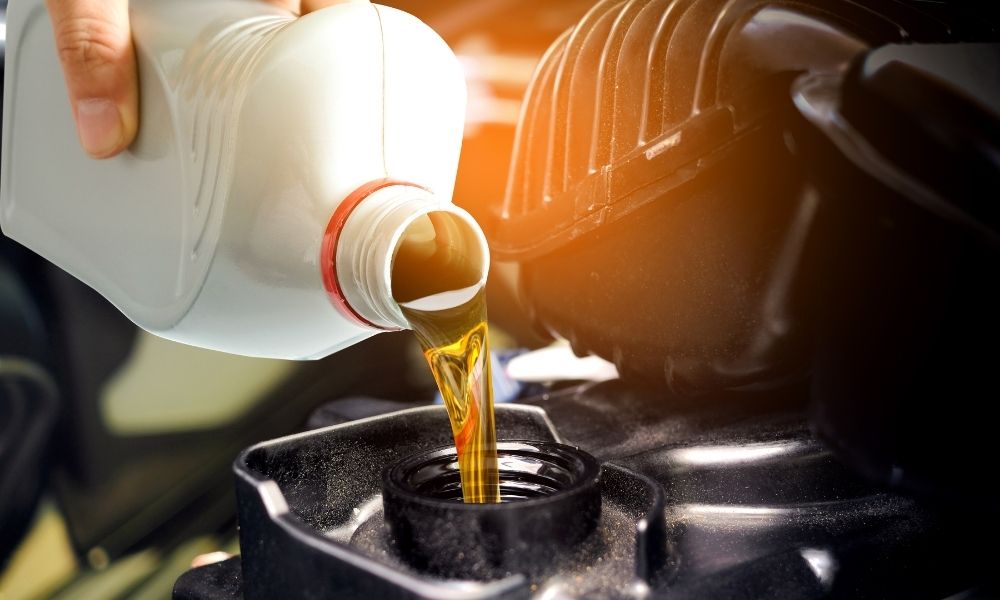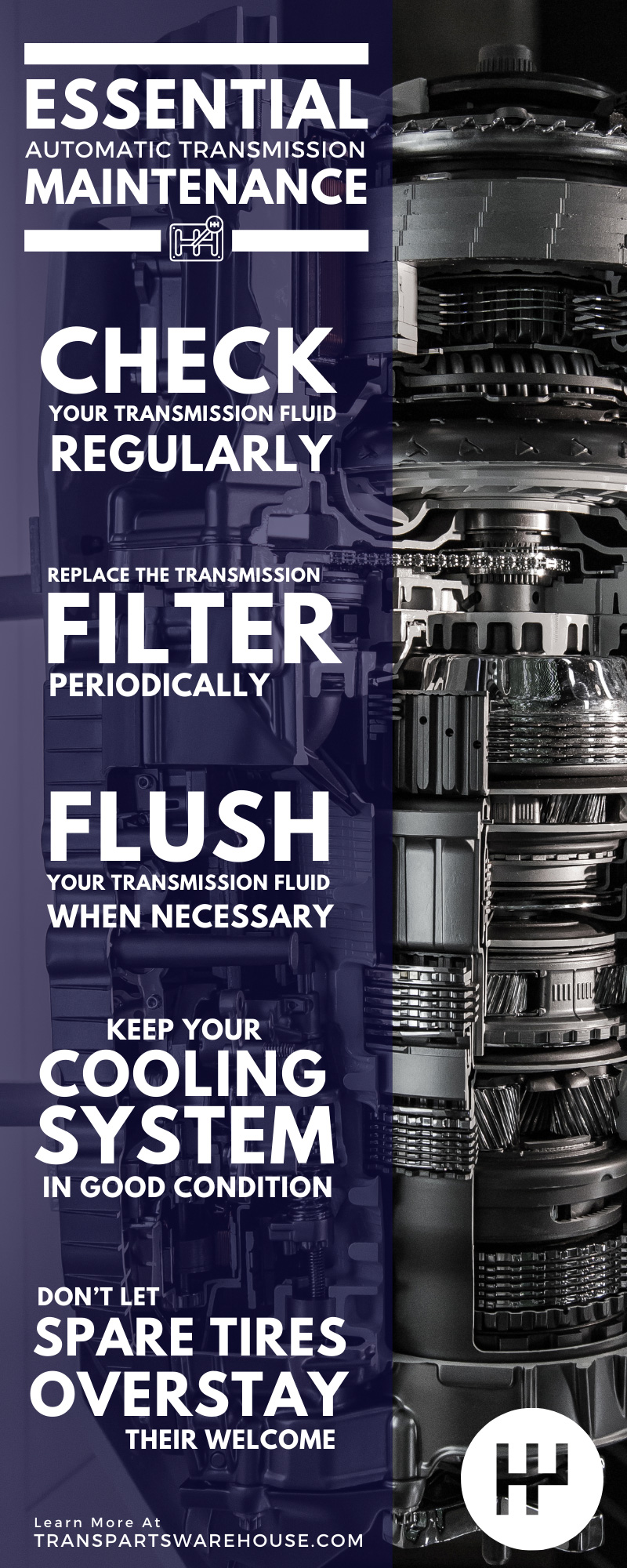
Just like any major component of your vehicle, it is important to take measures to care for and maintain your car’s automatic transmission. After all, the transmission is one of the most complicated and expensive parts of any vehicle. As such, it is highly beneficial to take the time to perform some basic preventative maintenance in order to avoid exorbitant repair or replacement costs. If you’re interested in properly caring for your transmission but aren’t sure where to begin, take a look at this list of essential automatic transmission maintenance tasks to help guide you in the right direction.
Check Your Transmission Fluid Regularly
One of the most important maintenance tasks to complete in order to keep your transmission in good shape is to check your automatic transmission fluid regularly. Automatic transmission fluid is responsible for lubricating the internal moving parts of the transmission, helping prevent overheating, and cleaning and protecting metal surfaces from premature wear. In order for it to fulfill its many important purposes, there must be an ample amount of transmission fluid, and the fluid must be in good condition.
To ensure that there is enough clean transmission fluid in your automatic transmission system, you must check it regularly—typically every six months or so depending on how often you drive and your manufacturer’s recommendations. Fortunately, checking automatic transmission fluid is a relatively simple task. All you need to do is locate and remove the transmission fluid dipstick. If the transmission fluid is below the “Full” line on the dipstick, smells burnt, or contains small particles, or is discolored (transmission fluid should be a clear, pinkish color), then the fluid needs to be refilled or replaced.
Replace the Transmission Filter Periodically
One way to provide proper maintenance for automatic transmissions is to routinely inspect the filter. To lengthen the lifespan of your vehicle’s automatic transmission fluid and keep your transmission in optimal condition, it’s important to replace the transmission filter periodically. The transmission filter is responsible for catching excess transmission fluid regulating fluid pressure, and helping keep contaminants out of the transmission fluid.
Most manufacturers recommend that vehicle owners change their transmission filter after driving around every 30,000 miles or every two years depending on which comes first. When replacing the filter, a mechanic should also change the fluid and replace the transmission pan gasket as well.
It is important to note that not all automatic transmissions have transmission filters. To determine if your make and model relies on a transmission filter, consult your owner’s manual.
Flush Your Transmission Fluid When Necessary
Another transmission fluid-related maintenance task that is essential for preserving your automatic transmission is flushing the transmission fluid when necessary. As previously stated, transmission fluid can become contaminated over time. When transmission fluid becomes discolored or starts to smell burnt, it is time to get a transmission fluid flush. In addition to replacing poor quality transmission fluid with new, clean fluid, getting a transmission fluid flush will also help clear any old fluid out of the torque converter or oil cooler lines which could impede their operation.
The frequency at which you should flush your transmission fluid will vary depending on your driving habits and conditions. However, you can get a general idea of when to replace your transmission fluid by looking at your vehicle’s owner’s manual. Because properly flushing transmission fluid requires specialized equipment—draining the transmission pan only changes around 30 to 50 percent of the fluid—it is often best to enlist the help of a professional mechanic to complete this task.
Keep Your Cooling System in Good Condition
In order to keep your transmission in good operating condition, you will also have to keep your vehicle’s cooling system in tip-top shape. While the cooling system may be located in the engine, it can have a large impact on your vehicle’s transmission as well.
The cooling system helps prevent the engine from overheating while also keeping transmission fluid cool as well. To prevent the transmission from overheating or the transmission fluid from deteriorating in quality more quickly, make sure to have your engine’s cooling system serviced on a regular basis.
Don’t Let Spare Tires Overstay Their Welcome
There is a time and place for spare tires. While they are extremely helpful in the case of a flat tire or blowout, they shouldn’t be used for long. After you have safely driven your vehicle back to your house or an auto mechanic, it’s important to take the spare off as soon as possible and replace it with a new tire.
Generally, you should not drive on a spare tire for more than 70 miles at a speed of 50 mph. However, the less you drive on the spare the better. In addition to having very little tread which poses a safety risk, driving with a tire that is smaller than the others places added stress on the transmission and other components such as the brakes and wheel bearings. To keep your vehicle in good condition, make sure to limit the amount of time that you drive with a spare tire as much as possible.
Be Mindful of Your Driving Habits
Another automatic transmission maintenance tip is to be mindful behind the wheel. Your driving habits can have a large impact on the lifespan of your transmission. To keep your transmission in optimum condition, try to practice good driving habits. For example, avoiding riding the brake can help preserve your vehicle’s transmission. When you drive with your foot slightly pressed down on the brake pedal, the small amount of pressure can ultimately place a significant amount of strain on the automatic transmission over time. As such, you should aim to drive a bit more cautiously and avoid resting your foot on the brake pedal.
Another driving habit that you should break in order to keep your transmission in good condition is shifting gears without coming to a complete stop. Before shifting into park, reverse, drive, or really any gear, make sure that the vehicle is completely stopped. Shifting gears while in motion will place an extensive amount of strain on the transmission and will likely result in significant damage overtime.
If you haven’t adhered to this list of essential automatic transmission maintenance tasks in the past and have wound up with a faulty transmission, don’t worry. Transparts Warehouse offers an extensive array of automatic transmission repair parts for a wide variety of different makes and models. To find the part that you need to get your transmission operating smoothly again, shop our inventory or give us a call today.


